Arecent visit to Spain found me once more “chasing” after Philippine artwork and objects in cities near Madrid, where I was based. In the process, I discovered that Juan Luna’s artistic footprint in Spain was a little more extensive than is widely known. I was afforded a very rewarding glimpse of a few of Luna’s works in Spain outside the well-known group of his award-winning works and commissions such as La Muerte de Cleopatra in the Museo del Prado and the Batalla de Lepanto in the Senado. Along the way, I also stumbled across a small trove of work by Luna’s Filipino contemporaries.
Madrid: Ateneo de Madrid
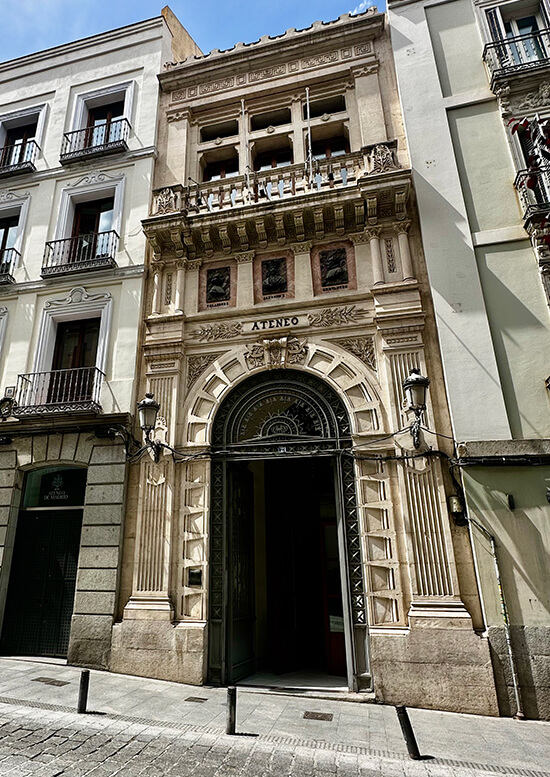
The Ateneo de Madrid (no relation to my alma mater in the Philippines), is a scientific and literary institution established in Madrid in the 19th century by the Spanish intellectual elite, and was linked to liberal and Masonic ideals which would have brought it into some conflict with the Catholic Church in Spain. Filipino ilustrados such as Jose Rizal and Juan Luna were members. Also known as the Atheneum, the Ateneo de Madrid was a membership club in which one could meet like-minded people, attend book launchings, poetry recitals, and theatrical presentations; or use as a place of study. In the latter part of the 19th century, the club eventually admitted artists, and women, as well.
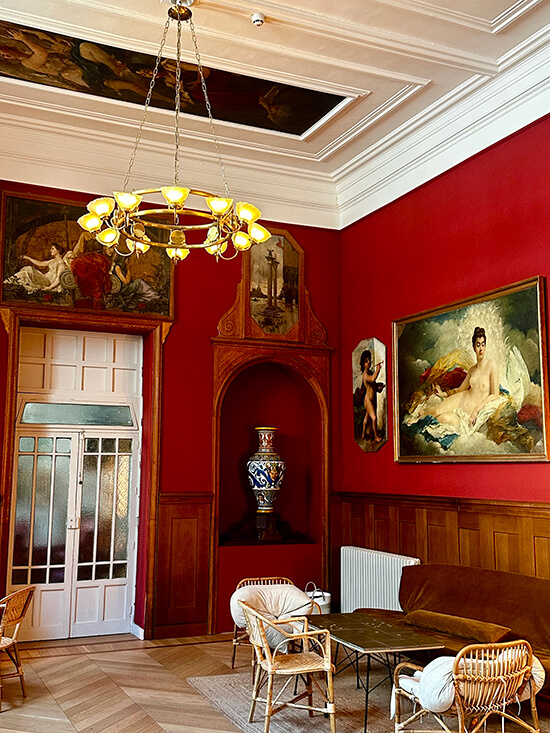
Well-kept and retaining some of its 19th century character, the Ateneo de Madrid is more of a cultural institution nowadays, and still run as a membership club. The building houses lounges for informal meetings, a theater-auditorium, and large library study rooms lined with impressive three-story bookshelves containing a highly regarded collection of bound volumes. It is a favored study center for candidates taking government qualifying examinations. Masonic symbols—stars, compass, harp and gavel—were depicted decoratively throughout, including on the wrought iron stair bannisters.

Particularly notable are the corridor walls lined with perhaps a hundred painted portraits of past presidents and eminent members of the club. Here, the highlight for any Filipino viewer would be Juan Luna’s portrait of Rafael Maria de Labra, a senator and president of the club (1913-17), who was an abolitionist who worked to end slavery in Cuba and Puerto Rico in the late 1800s. According to the curator of collections, Labra and Juan Luna were friends and the former had specifically commissioned the latter to make his portrait in 1884, the same year “Spoliarium” was painted. Intensely and sensitively portrayed, Labra’s melancholy visage and magnificent beard loom out of a dark background. Although I couldn’t spot it for myself as the portrait is hung quite high, it is reputedly signed “Bulan” in pre-colonial Philippine baybayin script, meaning “moon,” which is a reference to Luna’s last name. Only a few paintings in Luna’s body of work are signed this way, perhaps four or five.
Valencia: Casa-Museo Benlliure
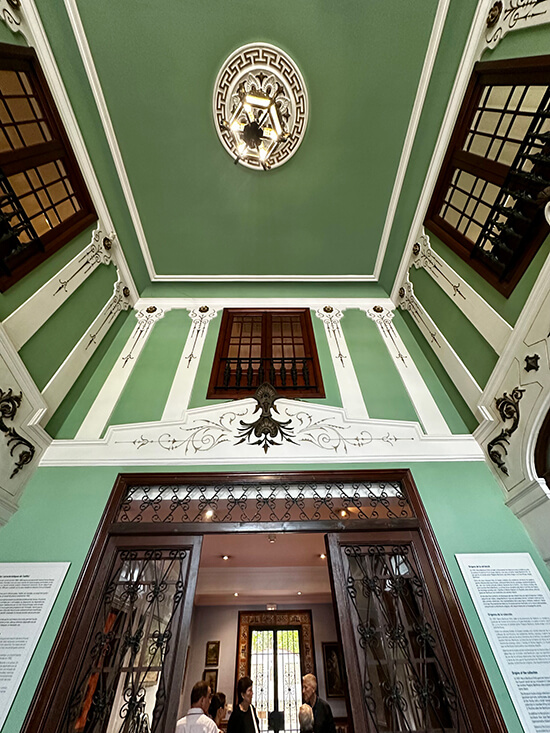
Valencia, about two hours east of Madrid by fast train, is a lovely port city with lots of greenery and ancient buildings, famed for its iconic dish, paella. The Moors were in this part of Spain for at least 500 years, and Arabian-inspired names abound, identifiable by the “Ben” prefix; including the Benlliure family name, according to the curator of this small, government-run house museum, the Casa-Museo Benlliure.
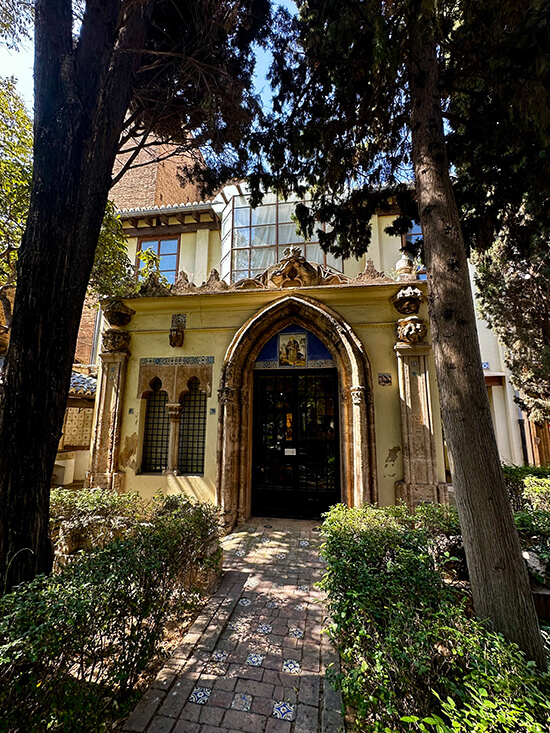
Jose Benlliure, a painter, and his brother Mariano, a sculptor, were close friends of Juan Luna during his years as a pensionado of the Philippine government in Rome in the 1880s, sharing studio space in Via Margutta. Jose and his family eventually returned to Spain in the 1913, to their hometown of Valencia. Twenty years after Jose’s death in 1937, in 1957, his daughter Maria bequeathed the family home and accompanying artist studio to the city. The Benlliure family had an artistic tradition over many generations and their home remains a lasting reminder of artistic life in the early 20th century.
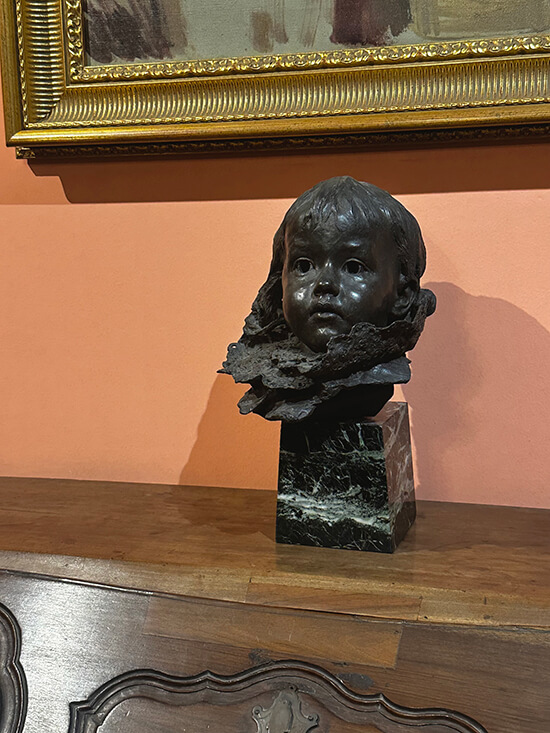
The house is modest in proportions, with rooms decorated with colorful ceramic tiles and installed with elaborately carved wooden furniture brought back from the family’s Italian sojourn. The rooms are filled with paintings, including some small ones by Joaquin Sorolla, another well-known artist from Valencia; and the family’s own artistic output.
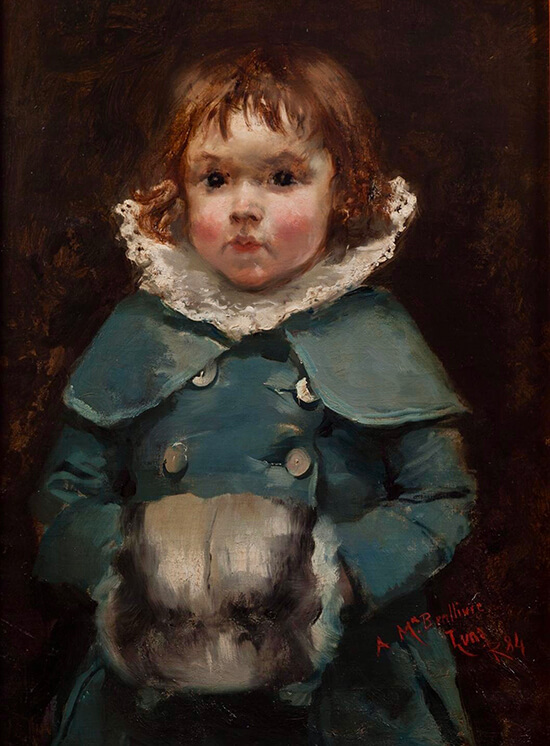
There are two works by Luna currently on display. One is a medium-size vertical work depicting a classically-robed female figure wearing a veil crowned with a wreath, seemingly stirring something in an urn, perhaps some ritual offering. Signed by Luna and dated 1883, the painting is from the artist’s period living in Rome (1878-1884) where his work centered on the classical themes considered superior by art academicians of the time.
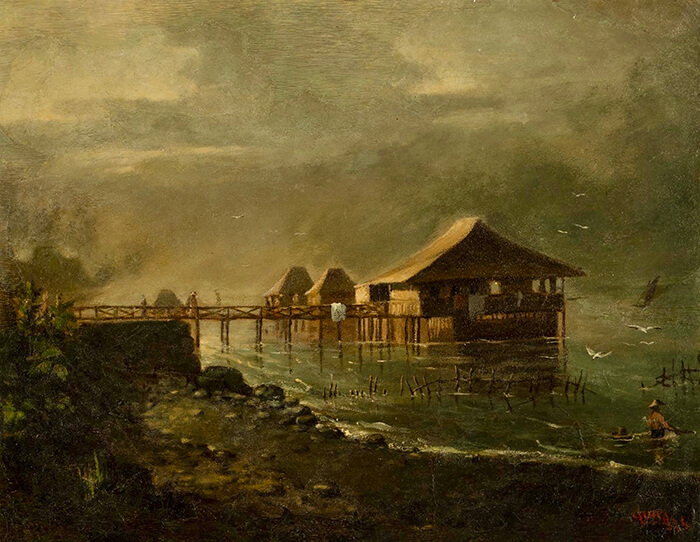
Luna’s other work on display in the main sitting room is an attractive, large portrait of a young child in a blue winter coat and muff, with a ruff of lace as a collar. A dedication by Luna on the bottom right of the portrait reads, “A Ma. Benlliure,” beneath which is his signature “Luna,” along with the letter “R,” and the number “84.” The child is thought to be Maria, the daughter of Jose Benlliure, who would have been about three years old in 1884, in Rome. In a nearby room, a lovely bronze sculptural study by Mariano Benlliure of a child’s head with the same distinctive lace ruff as the painting is probably of Maria as well.
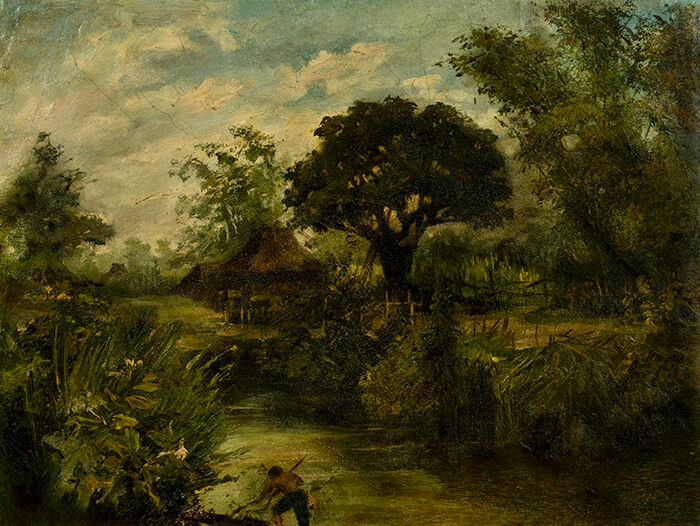
At the bottom of a small courtyard garden behind the house is the two- story artist studio of Jose Benlliure and his son Peppino, also a painter, who tragically died of tuberculosis at the young age of 33. The upper story of this charming artist studio, which was Jose’s domain, is filled with his paintings, sketches and artifacts from his travels.
Not on public display are a tiny sketchbook of pen and ink drawings by Juan Luna, and a couple of small landscapes. The sketchbook contains quick portraits and studies of figures and scenery, most labeled as being in Rome. Many of the sketches are made with a deft hand and some are quite finished, showing Luna’s competence in the line and tonality of the graphic arts.

According to the museum director, the landscapes are presumed to be dated around the 1870s, which would have been when he was studying at the Academia de Dibujo y Pintura in Manila, under the supervision of Lorenzo Guerrero. The landscapes may appear atypical of Luna’s usual grand work and themes with their smaller scale and genre subject matter; but they are nevertheless enchanting renditions of Philippine scenery made by a budding artist.
It was a welcome surprise to find out more about the breadth and depth of Juan Luna’s reputation in Spain, and to serendipitously discover the works of his Filipino contemporaries. It was likewise heartening to note that the directors, conservators and curators of the Spanish museums I visited were well aware and quite knowledgeable of Juan Luna’s significance in the network of the 19th century art worlds of Spain and the Philippines.
* * *
The conclusion of this article will describe a treasure trove of 19th century Philippine painters in a small city museum in Cordoba, Spain.











